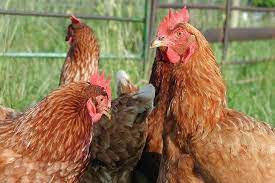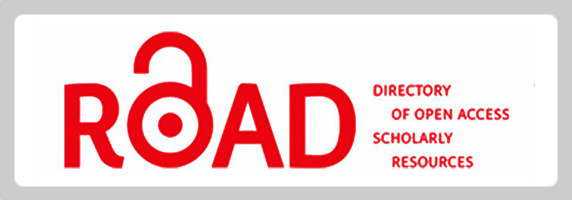Review on Farmers’ Trait Preferences for Chicken Breeding Objectives in Local Chicken Ecotypes in Ethiopia
Abstract
Information on indigenous chickens breeding practices, breeding objectives and farmers’ trait preferences require for designing, planning, implementing and sustainable genetic improvement programme of indigenous chickens. Doing this, it is possible to improve the livelihoods of small scale farmers and rural developments as whole. Therefore, research results and facts of local chicken breeding were reviewed with the aim of delivering relevant information on breeding objectives and trait preferences of farmers in local chicken ecotype in Ethiopia. According to the review, breeding objectives of the farmers were egg production, cultural/religious reasons, sale incomes, and meat. Overall farmers preferred traits are comb type, plumage color, body weight, breeding ability, body conformation, egg number and size, adaptive trait and mothering ability. In generally, these traits are considered as important for selecting chicken in a market for meat and egg for consumption and for the breeding purpose in Ethiopia. Therefore, these preference traits and breeding objectives of farmers are important to improve the genetic part of chickens in the Ethiopia.
Downloads
References
Abdelqader, A., Wollny, C. and Gauly, M. (2007). Characterization of local chicken production system and potential under different level of management practice in Jordan.Journal of Tropical Animal Health and Production. 39:55–164.
Addis, G. (2014). Farmers’ trait preferences for their breeding objectives of local chicken ecotypes in Ethiopia.Global Science Research Journals. Vol. 2 (2), pp. 116-120.
Addisu, H., Hailu, M. and Zewdu, W. (2013). Indigenous Chicken Production System and Breeding Practice in North Wollo, Amhara Region, Ethiopia. Poult Fish WildlSci 1:108.
Bekele, B., Melesse. A., Banerjee, S., Esatu, W. and Dessie, T. (2020). Farmers’ preferences towards breeding objective for indigenous chickens in different agro-ecologies of Ethiopia. African Journal of Agricultural Research: Vol. 16(12), pp. 1681-1690.
Bogale, K. (2008). In situ characterization of local chicken eco-type for functional traits and production system in Fogera district, Amahara regional state. M.Sc. Thesis submitted to the department of animal science school of graduate studies, Haramaya University, 107p.
Brannang, E. and Person, S. (1990). Ethiopian animal husbandry and Breeding in the tropics and sub- tropics. Humboldt University of Berlin, Germany. Uppsala, Sweden, 127pp.
Chencha, C. and Hailemikael, N. (2016). Performances, Breeding Practices and Trait Preferences of Local Chicken Ecotypes in Southern Zone of Tigray, Northern Ethiopia. Asian Journal of Poultry Science, 10: 158-164.
Dana, N., L.H. Van der, W., Dessie, T. and J.A.M. van Arendonk, (2010). Production objectives and trait preferences of village poultry producers of Ethiopia: Implications for designing breeding schemes utilizing indigenous chicken genetic resources. Trop. Anim. Health Prod., 42: 1519-1529.
Emebet, M., Horpal, S., Tesefaye, S. and Anna, MJ. (2014). Phenotypic Characterization of Indigenous Chicken Populations in South West and South Part of Ethiopia. British Journal of poultry Sciences, 3(1): 15:19.
Fisseha, M., Abera, M. and Tadelle, D. (2010). Assessment of village chicken production system and evaluation of the productive and reproductive performance local chicken ecotype in Bure district, North West Ethiopia. African Journal of Agricultural Research Vol. 5(13): pp. 1739-1748.
Halima, H. (2007). Phenotypic and Genetic Characterization of Indigenous Chicken Populations in Northwest Ethiopia. PhD Thesis; University of the Free State, Bloemfontein, South Africa, p. 186.
Jens Christian, R., Anders, P., Charlotte, V., Ainsh, MC. and Lone, F. (2004). Keeping village poultry A technical manual for small scale poultry production. Copenhagen, Denmark, 34pp.
Kassa, B., Tadesse Y., Esatu W. and Dessie, T. (2020). Village Chicken Breeding Objectives and Trait Preferences of Chicken Producers’ in Western Amhara, Ethiopia. Journal of Biology, Agriculture and Healthcare Vol.10: 18-26.
Markos, S., Belay, B. and Dessie, T. (2016). Village chicken breeding practices, objectives and farmers’ trait preferences in western zone of Tigray, Northern Ethiopia. Journal of Agricultural Research and Development Vol. 6(1). pp. 001-011.
Meseret, M. (2010). Characterization of Village Chicken Production and Marketing System. M.Sc. Thesis Submitted to the Department of Animal Science, Jimma University, College of Agriculture and Veterinary Medicine, School of Graduate Studies, 110pp.
Muchadeyi, F., Wollny, A., Eding H., Weigend, S., Makuza, M. and Simianer, H. (2009). Variation in village chicken production systems among agro-ecological zones of Zimbabwe.Tropical Animal Health and Production. 39: 453-461.
Nigussie, D. (2011). Breeding programs for indigenous chicken in Ethiopia, Analysis of diversity in production systems and chicken populations. PhD .Thesis submitted in fulfillment of the requirements for the degree of doctor at Wageningen University Netherlands, 148pp.
Salam, K. (2005). Improvement of village chicken production in a mixed (chicken ram) farming system in Burkina Faso.Ph.D.Thesis.Wageningen Institute of Animal Sciences, Animal Nutrition Group, Wageningen University, the Netherlands, 125pp.
Solkner, J., Grausgruber, H., Okeyo, AM., Ruckenbauer, P. and Wurzinger, M. (2008) Breeding objectives and relative importance of traits in plant and animal breeding: a comparative review. Euphytica. ;161:273–282.
Solomon, D. (2007). Suitability of hay-box brooding technology to rural household poultry production system. Lives. Res. Rural Dev., 19 (1).
Solomon, D. (2008): Ethiopia: Poultry sector country review. FAO, Rome, Italy.
Tadelle, D (1996): Studies on village poultry production systems in the central highlandsof Ethiopia. M Sc. Thesis, Department of Animal Nutrition and Management of SwedishUniversity of Agricultural Sciences, Uppsala, Sweden.
Tadelle, D., Alemu, Y. and Peters, K. (2003). Village chicken production systems in Ethiopia: Use patterns and performance valuation and chicken products and socio-economic functions of chicken. Livestock Research for Rural Development (15)1.
Teklewold, H., Dadi, L., Yami, A., and Dana, N., (2006). Determinants of adoption of poultry technology: a double hurdle approach, Livestock Research for Rural Development, 18(3).
Zewdu, W. (2004). Indigenous cattle genetic resources, their husbandry practices and breeding objectives in Northwestern Ethiopia M.Sc. Thesis. Alemaya University, Alemaya, Ethiopia.

Copyright (c) 2021 maticha korato, Amsale Hankamo, Teramaj Abebe

This work is licensed under a Creative Commons Attribution-NonCommercial-NoDerivatives 4.0 International License.










